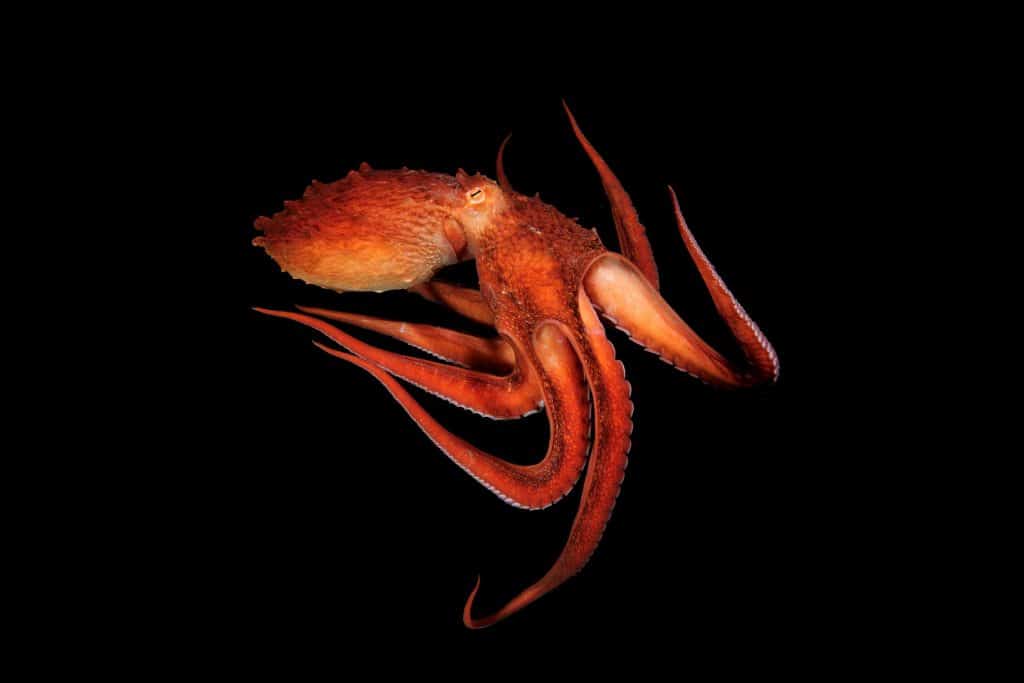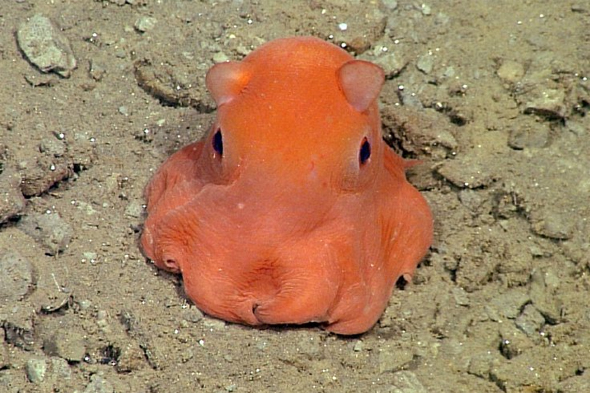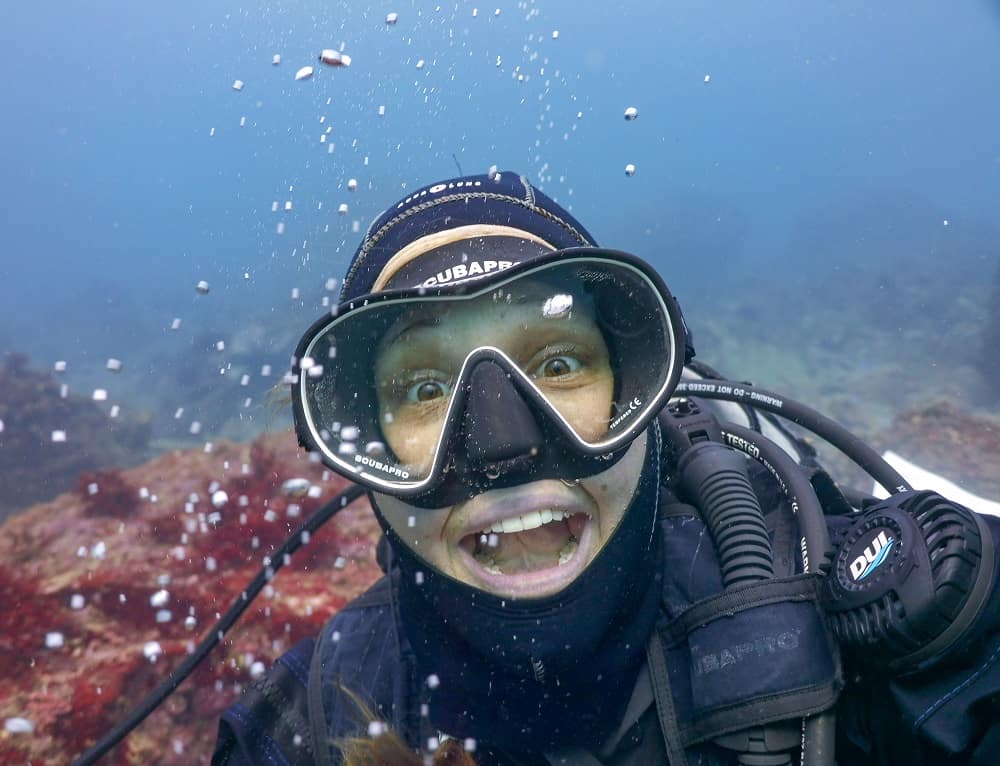Incirrate vs. Cirrate Octopuses: What’s The Difference?
Do the words incirrate vs. cirrate mean anything to you? Or maybe “regular” octos and “finned” octos? Well, they’re about to. Those are two suborders of octopuses, and we are going to get into what makes each group special! Read on to discover which octopus belongs where.

Do kingdom, phylum, class, order, genus, and species bring back any fond high school biology memories? Animal classification is how we group animals based on their similarities and differences.
It starts broadly with animals being lumped into 2 groups: vertebrates and invertebrates. From there, it continues to narrow down until we get to an individual species.
We know our cephalopods fall into the invertebrate category, but where do we go from there? Don’t worry, this won’t be a repeat of your biology class, but we will break down the differences between two important suborders of octopus!
All hail Octopoda!
There are roughly 300 species of octopus roaming the world’s oceans. They are grouped into their own order called Octopoda! From there, they branch off into two suborders: cirrata and incirrata.
The major difference between the two? Octopuses in the suborder cirrata have a single row of suckers with each sucker bearing hair-like projections called “cirri” while incirrrate octopuses lack these hairs.
Easy enough to remember, right? Naturally, there are more differences, so let’s take a look at who belongs where!
Cirrate octopus
Let’s start with the smaller suborder that includes our finned, Deep-Sea Octopus!
Cirrate octopuses are deep-sea octopuses living at depths between 100 to 7,000 meters (328-23,000 feet). Besides their cirri-covered suckers, cirrate octopuses have these unique attributes:
- A small internal shell
- Two fins on the side of their head
- Lacks an ink sac
- Many species lack a radula (ribbon-like tongue with tiny teeth)
- Males lack a hectocotylus, but some species possess enlarged suckers
- Females are continuous spawners which means they are always pregnant!
The Umbrella Octopus family
The biggest family within the cirrate octopus suborder is the Umbrella Octopus (Opisthoteuthidae), who all have a web of skin between their arms.
To move through the water, they open and close their webbed bodies like a big umbrella moving along the ocean bottom.
The Umbrella Octopus family includes both a fan favorite and the cutest deep-sea critter to lurk in the ocean depths: Flapjack and Dumbo Octopuses!
Meet the Dumbo Octopus
Dumbo Octopuses, belonging to the genus Grimpoteuthis, include 14 recognized species, most of which are the size of a guinea pig and are all as endearing as the next.
Aptly named after the lovable flying elephant, Dumbo, from the Disney cartoon classic because of the little flaps that stick out of their mantle, like Dumbo’s ears! They use these flaps like rudders on a boat to help steer themselves through the water.
Cirri- I’m hungry!
Being a cirrate octopus, they have special hairs next to their suckers called cirri that create a current helping direct worms, shellfish, and small shrimp-like crustaceans called amphipods towards their mouth.

No ink sac?
These octopuses lack an ink sac because they live in such deep water that predators are sparse and black ink wouldn’t be much of a defense in a pitch-black environment.
And that’s not all!
An octopus with a shell…
Their internal shell, an ode to their Mollusca phylum, is a cartilaginous “U” or “V” and helps give the octopus some shape and also supports their muscular fins for swimming.

Woah, that’s a lotta babies!
Lastly, their crazy reproductive habits help separate the cirrate from the incirrate octopus.
Many octopuses are semelparous, which means they only lay eggs once and die after their babies hatch. Not our cirrate octopus!
Female Dumbo Octopus can carry around a male’s (or multiple male’s) sperm packets. They hold on to and can fertilize eggs with different packets of sperms. Dissections of Dumbo Octopus have shown females carrying around eggs in different development stages. It makes them seem like they are always pregnant!
When the eggs are ready, females will find rocks or shells to lay them on and go about their business. These deep-sea mamas live for 3-5 years, laying eggs as they please.
This reproductive strategy fits their environment because the ocean depths are a vast place, and you never know when you’ll meet another Dumbo Octopus.
Better to stock up on sperm and lay eggs on your own time!
🐙 Octopus Fun Fact
If you loved learning about the Dumbo Octopus, take a peek at this blog post full of fun facts!

Meet the Flapjack Octopus
Did you know that “Pearl” from the beloved Pixar classic, Finding Nemo, is part of the umbrella octopus family? She is a Flapjack Octopus (Opisthoteuthis californiana) who is found nowhere near the shallow waters of the barrier reef in Australia.

Real-life Pearl would spend her time in the deep sea off of the coast of Japan or the western USA. Not only that, her famous line “Awww, you guys made me ink!” wouldn’t be possible because, like all members of the umbrella octopus family, she is a cirrate octopus that doesn’t have a functioning ink sac.
While Disney probably picked a flapjack octopus for the maximum cuteness factor, they should have picked a more appropriate incirrate octopus for this shallow water octopus role!
Incirrate octopus
If you think of your stereotypical octopus, it probably falls into the incirrate octopus group. We are talking about that bulbous mantle (sac behind the head), 8 sucker-lined arms with hair (cirri), shoots ink, and color-changing skin type octopus.
If the Dumbo Octopus is the poster child for the cirrate octopus, the Common Octopus would be it for the incirrate suborder!
This suborder is sometimes referred to as Benthic Octopus, but that can be a bit misleading.

What’s a benthic octopus?
The term benthic refers to anything associated with or occurring on the bottom of a body of water. This naturally leads us to think of species like the:
However, not all incirrate octopuses are benthic!

Pelagic Octopuses swim freely (and possibly swim deep!) within the water column, such as the
- Blanket Octopus
- Paper Nautilus
- Seven-Armed Octopus
They also belong to the suborder incirrata since they are lacking the cirri on their suckers and fin flaps on the side of their head.

More research to come!
Due to our limited ability to observe them, we know far less about cirrate octopus than we do incirrate octopus.
For instance, no one has ever observed cirrate octopus mating! Imagine what other discoveries will be made, resulting in even more differences (or maybe some similarities!) between the two suborders.
Until then, we will continue to celebrate all octopuses no matter what suborder they belong to! (Although just between you and me, the Dumbo Octopus is by far the cutest!)
If you want to educate yourself some more about all sorts of different cephalopods, take a look at our encyclopedia. Or, what we call it, our Octopedia!
Connect with other octopus lovers via the OctoNation Facebook group, OctopusFanClub.com! Make sure to follow us on Facebook and Instagram to keep up to date with the conservation, education, and ongoing research of cephalopods.
More Posts To Read:
- Meet the Cockeyed Squid: the Deep-Sea Animal with a Giant Eye!
- 10 Facts About Baby Nautilus!
- Does Octlantis Exist?
- Dumbfounding Flapjack Octopus Facts You NEED To Know!
- What Is The World’s Biggest Octopus?

Corinne is a biologist with 10 years of experience in the fields of marine and wildlife biology. She has a Master’s degree in marine science from the University of Auckland and throughout her career has worked on multiple international marine conservation projects as an environmental consultant. She is an avid scuba diver, underwater photographer, and loves to share random facts about sea creatures with anyone who will listen. Based in Japan, Corinne currently works in medical research and scientific freelance writing!








